Are you tired of wrestling your furry friend in the bathtub or chasing them around the yard with a hose? A dog washing station provides a designated space for grooming, keeping water and mess contained in one area. A well-designed station can also make bathing more comfortable for your pet. With features like non-slip surfaces and adjustable water temperature, you can create a stress-free environment that may even help your dog enjoy bath time.
“It’s a great addition to a mudroom, so you can clean your dog before he tracks in dirt,” says architect Healy Rice of Wilmette, Illinois, who designed the one shown here. Though this project can cost $1,500 or more, Rice’s clients say it pays for itself in savings on carpet-cleaning alone. Here are her tips for designing this handy spot.
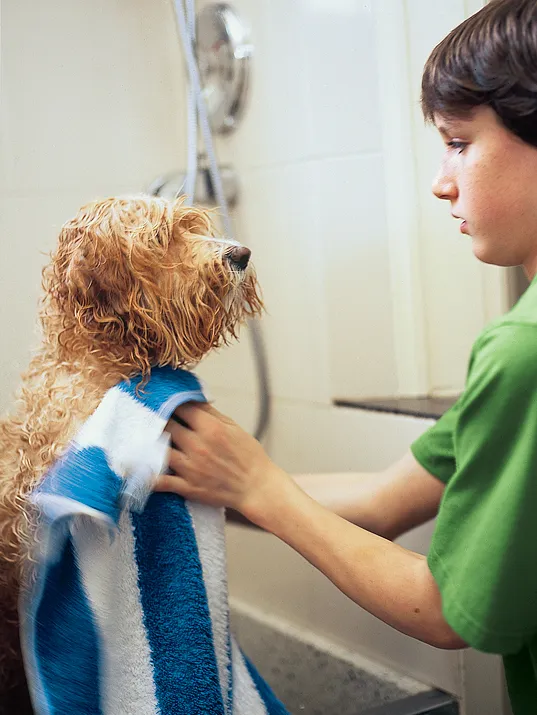
Choosing the Right Location for a Dog Cleaning Station
Selecting the perfect spot for your dog washing station is crucial for its functionality and convenience. Two popular options are integrating it into your mudroom or setting it up in the garage or basement.
Mudroom Integration
Incorporating a dog washing station into your mudroom is an excellent choice for many homeowners. This location allows you to clean your pet immediately upon entering the house, preventing muddy paw prints from spreading throughout your home.
When planning a mudroom installation, consider the available space and how it will fit with other mudroom elements like storage and seating. Ensure there’s enough room for you to move comfortably around the washing station while bathing your dog.
Garage or Basement Options
If your mudroom is too small or you prefer to keep the washing station separate from your living areas, the garage or basement can be excellent alternatives. These locations often provide more space to work with and may already have the necessary plumbing connections.
When setting up a dog washing station in the garage or basement, pay attention to factors like temperature control and ventilation. You may need to install additional heating or cooling systems to ensure your pet’s comfort during baths in extreme weather conditions.
Selecting the Perfect Tub
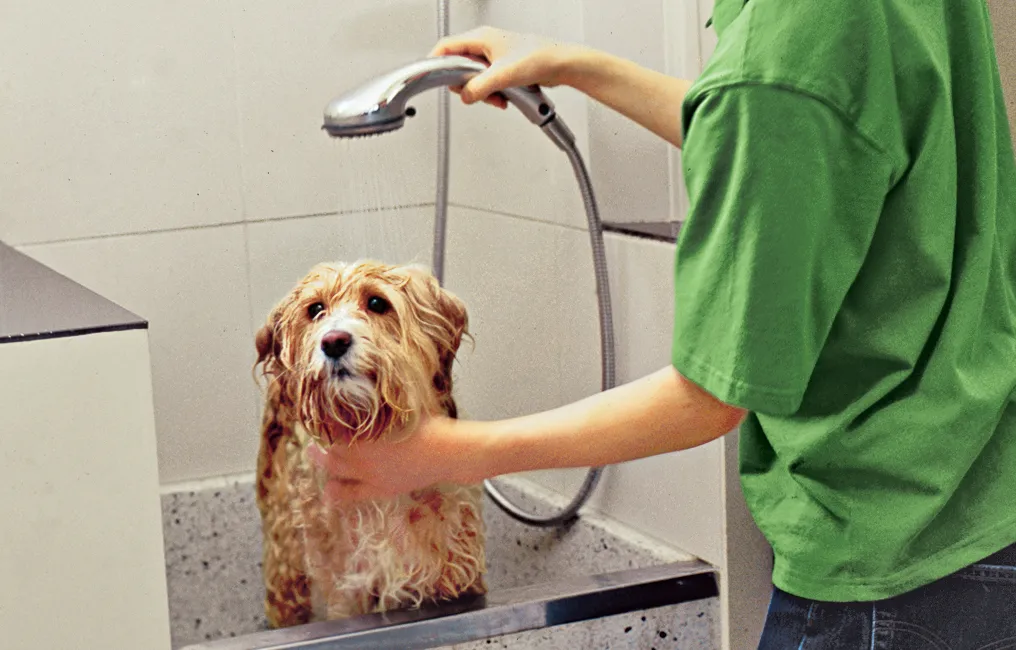
For all but the largest breeds, Rice uses a one-piece 20-by-20-inch mop sink that’s no more than 15 inches deep. Mop sinks are ideal, she says, because they’re deep enough to keep in water but shallow enough that it’s easy to guide your dog inside. Opt for one made of a durable, scratch-resistant material, like terrazzo.
For larger breeds, you may need to look for custom options or consider a walk-in shower design. Remember to factor in your own comfort as well – you’ll want enough space to move around and reach all parts of your dog during bathing.
Get the Height Right
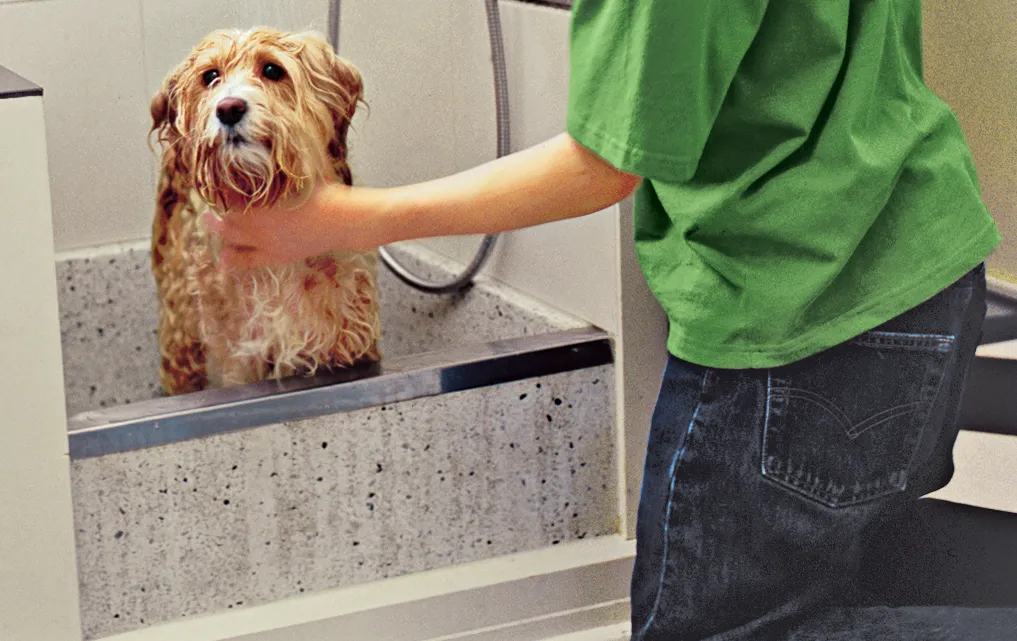
A floor-mounted tub allows larger dogs to climb in easily, but it may require you to kneel or bend uncomfortably. For smaller dogs (and for your back), you might want to install the basin at a more ergonomic height. Some designs even offer adjustable height options, allowing you to customize the setup based on your needs and your dog’s size.
Put the Faucet Hardware on the Wall
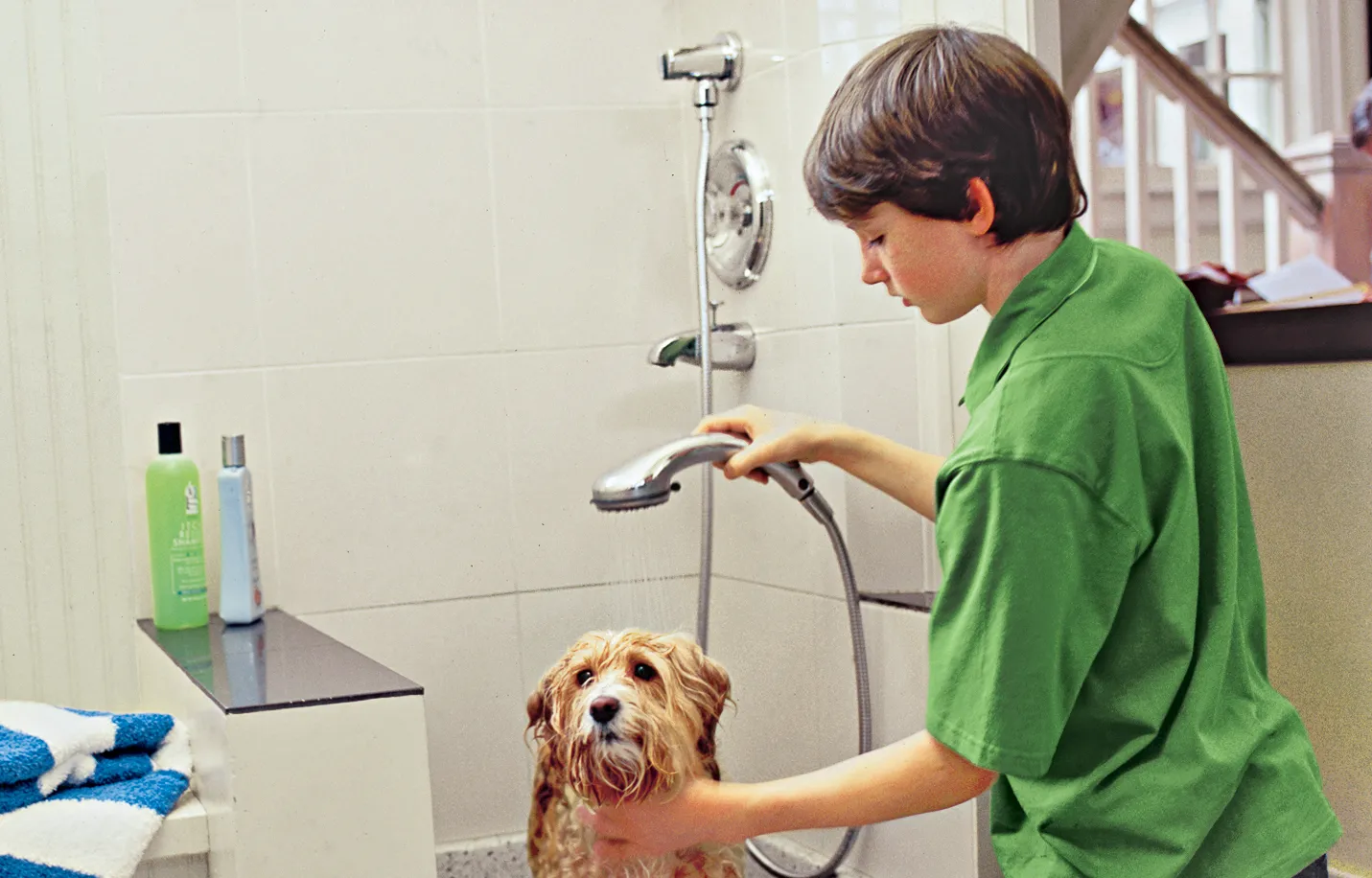
The faucet should be easily reachable from the tub’s edge. Place the faucet and the sprayer high enough on the wall so that your dog won’t bump his noggin. This setup keeps the hardware out of your dog’s way while allowing you easy access. Additionally, consider installing a handheld sprayer for more precise control during bathing.
Build a Rugged Surround
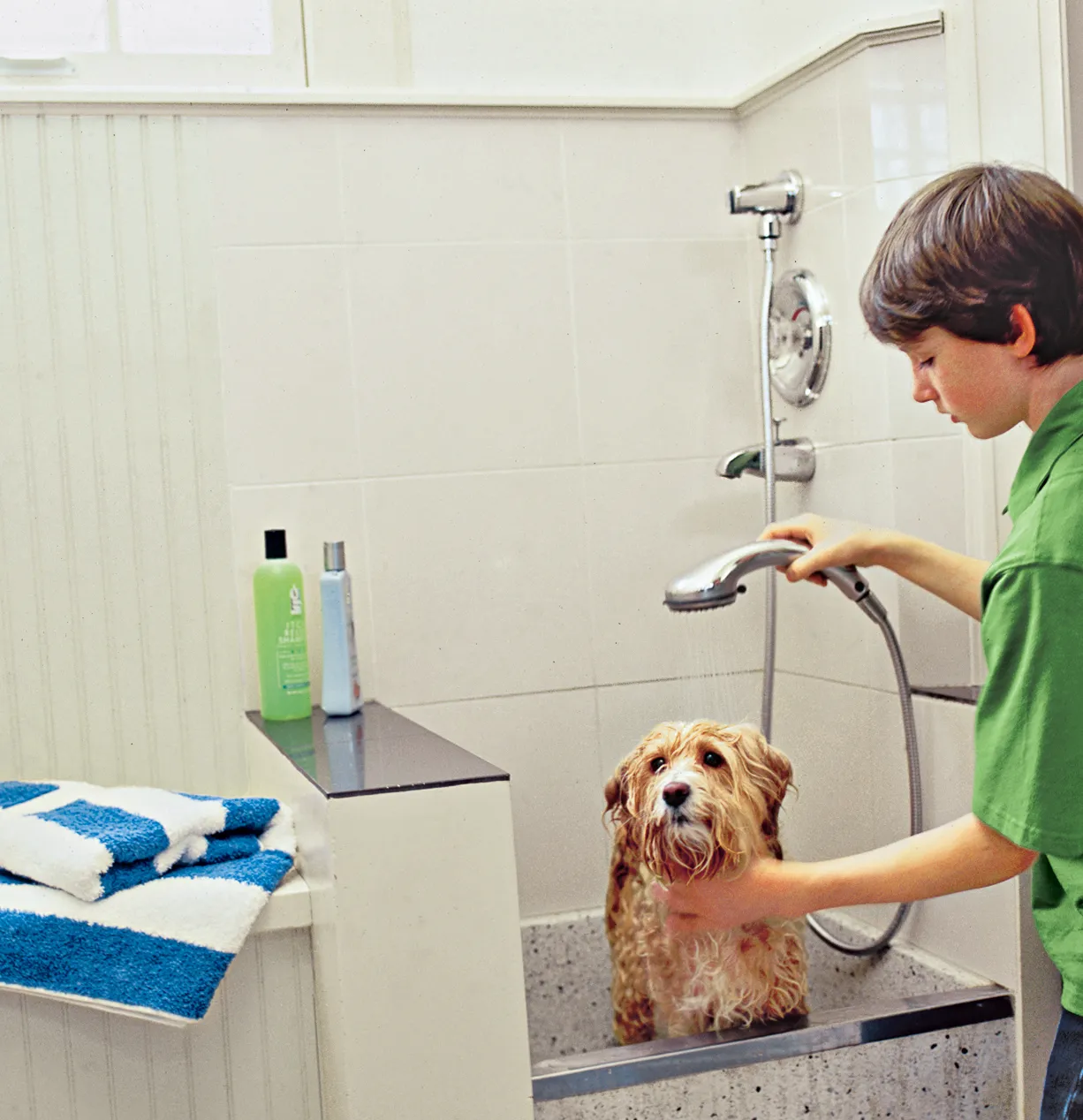
Protect the walls around your washing station from water damage by using waterproof materials. Rice recommends large-format, easy-to-clean ceramic tiles as a go-to choice. These tiles are durable, water-resistant, and simple to maintain. Another option is a waterproof beadboard made from solid surfacing, which can provide a more traditional look while still offering excellent protection against moisture.
Include a Shelf
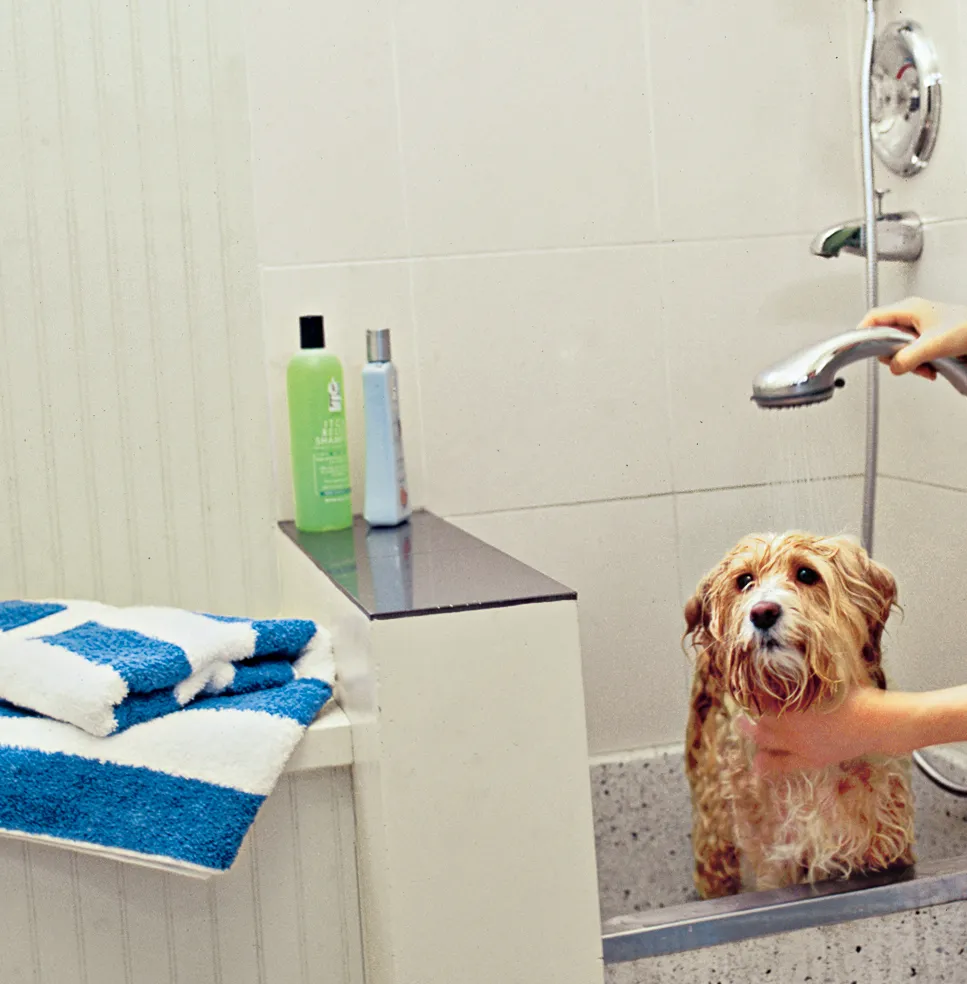
Incorporate storage solutions to keep all your dog grooming supplies organized and within reach. Rice suggests including a shelf for shampoo and conditioner as a convenient finishing touch. Consider adding cabinets or shelves above or beside the washing station to store towels, brushes, and other grooming tools. Having everything you need close at hand can make the bathing process much more efficient.
Secrets to a No-Stress Bath Time
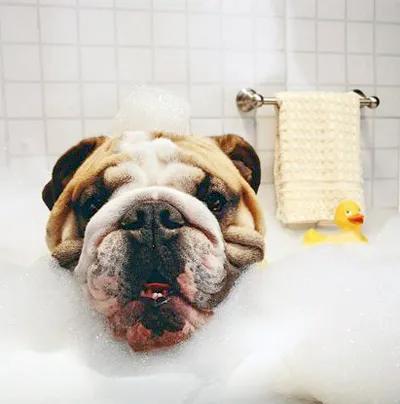
Once you’ve got the right space to clean up your pup, here are suggestions from the American Kennel Club for keeping the experience a positive one for all involved:
• A major fear for dogs during bath time is slippery surfaces. Place a grippy rubber mat inside the tub, and lay a nonskid rug outside on the floor for when he steps out. Keep your dog’s nails clipped to help them keep their footing.
• Check the water temperature before you turn the hand sprayer on — it should be no hotter than lukewarm. Use a gentle setting on the sprayer to keep your dog calm while rinsing them.
• When bath time is over, prevent them from shaking water all over you by using a microfiber towel to dry their coat quickly.
Cleaning Station Plumbing and Other Considerations
Consult with a professional plumber to ensure your station meets local building codes and functions efficiently. Key considerations include:
- Water supply: Install hot and cold water lines with appropriate pressure for comfortable bathing.
- Drainage: Ensure proper slope and size for the drain to prevent clogs from dog hair and debris.
- Hair traps: Install a hair trap in the drain to catch fur and prevent plumbing issues.
- Water heater: Consider a dedicated water heater for the washing station to ensure a consistent supply of warm water.
- Lighting: Good lighting is crucial for thorough cleaning and spotting any skin issues. Install bright, but not harsh, lighting above the washing station. Natural light from a window can also be beneficial if possible
- Ventilation: Proper ventilation helps control humidity and prevents mold growth. Install an exhaust fan or ensure adequate air circulation to keep the area dry and fresh. This is particularly important if your washing station is in an enclosed space like a basement or interior room.
Cost Considerations and Budget Planning
The cost of installing a dog washing station can vary widely depending on the materials, features, and whether you opt for professional installation. A basic DIY setup might cost around $300 to $800, according to Angi.
When budgeting for your project, consider these factors:
- Tub or basin cost
- Plumbing installation or modifications
- Waterproofing and tiling
- Fixtures (faucet, sprayer, drain)
- Storage solutions
- Additional features (adjustable height, specialized lighting)
DIY vs. Professional Installation
Deciding whether to tackle the installation yourself or hire a professional depends on your skills, budget, and the complexity of the project. A DIY approach can save money, but it requires plumbing and construction knowledge. If you’re handy and comfortable with home improvement projects, you might consider building a dog ramp or creating a dog feeding station as practice before taking on a washing station.
Professional installation ensures that the job is done correctly and up to code. It’s particularly recommended if you’re making significant plumbing changes or if the project involves complex construction. While it may cost more upfront, professional installation can save you time and potential headaches in the long run.
Maintenance and Cleaning Tips
To keep your dog washing station in top condition, regular maintenance is essential. Here are some tips to keep your station clean and functional:
- Rinse the tub thoroughly after each use to prevent soap scum buildup.
- Clean the tub and surrounding area weekly with pet-safe disinfectants.
- Check and clean the drain regularly to prevent clogs from hair and debris.
- Inspect faucets and sprayers for leaks or damage periodically.
- Replace non-slip mats as needed to ensure safety.
